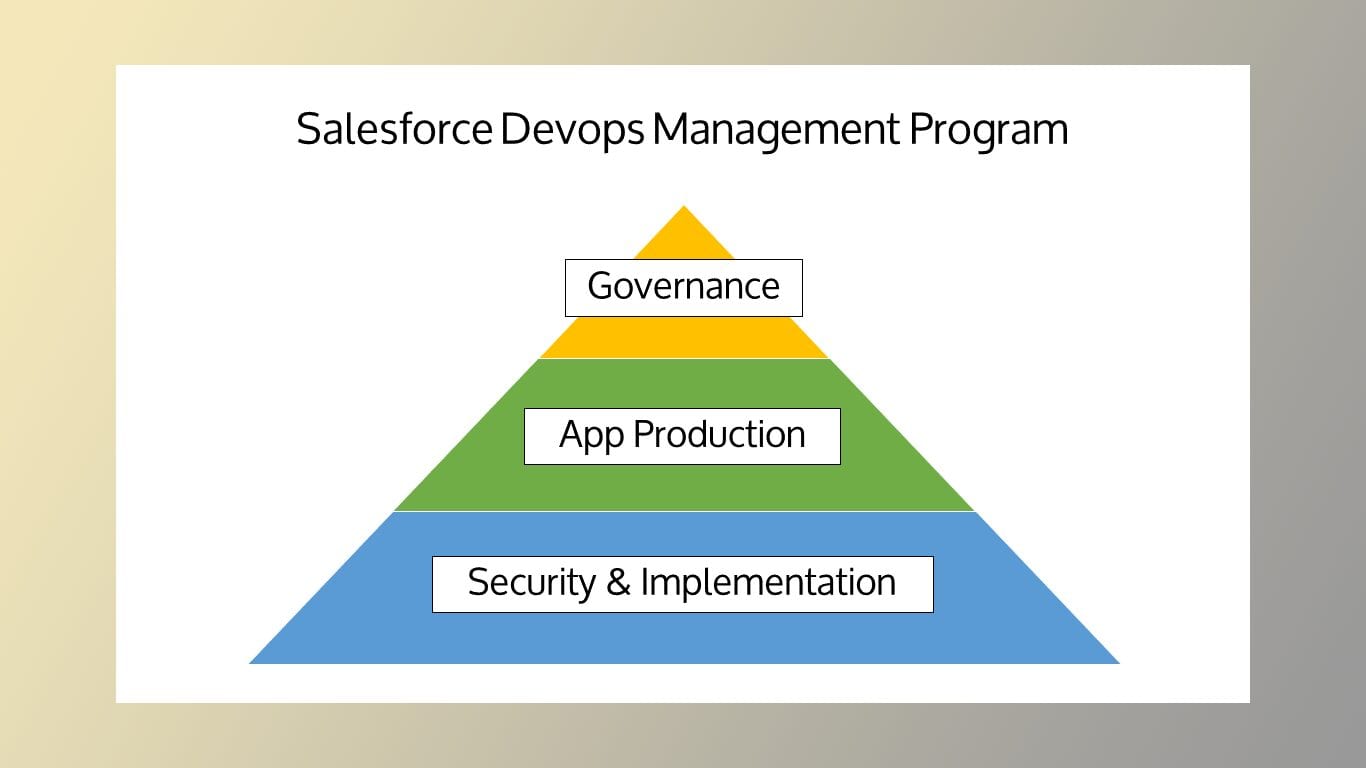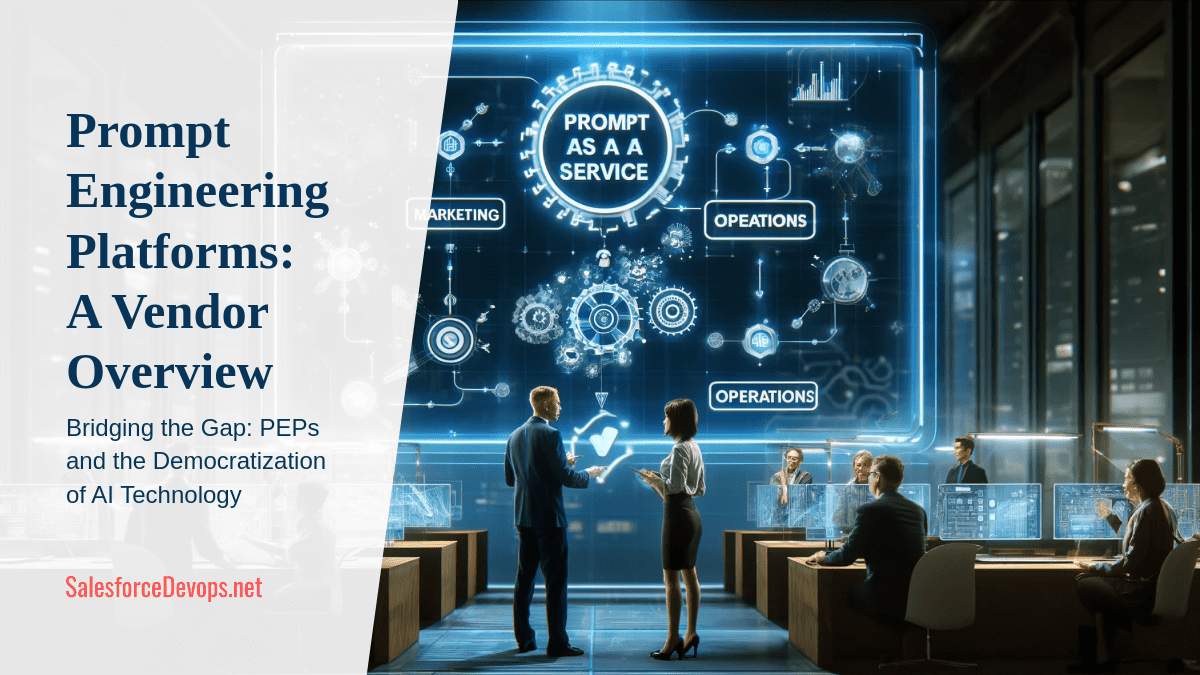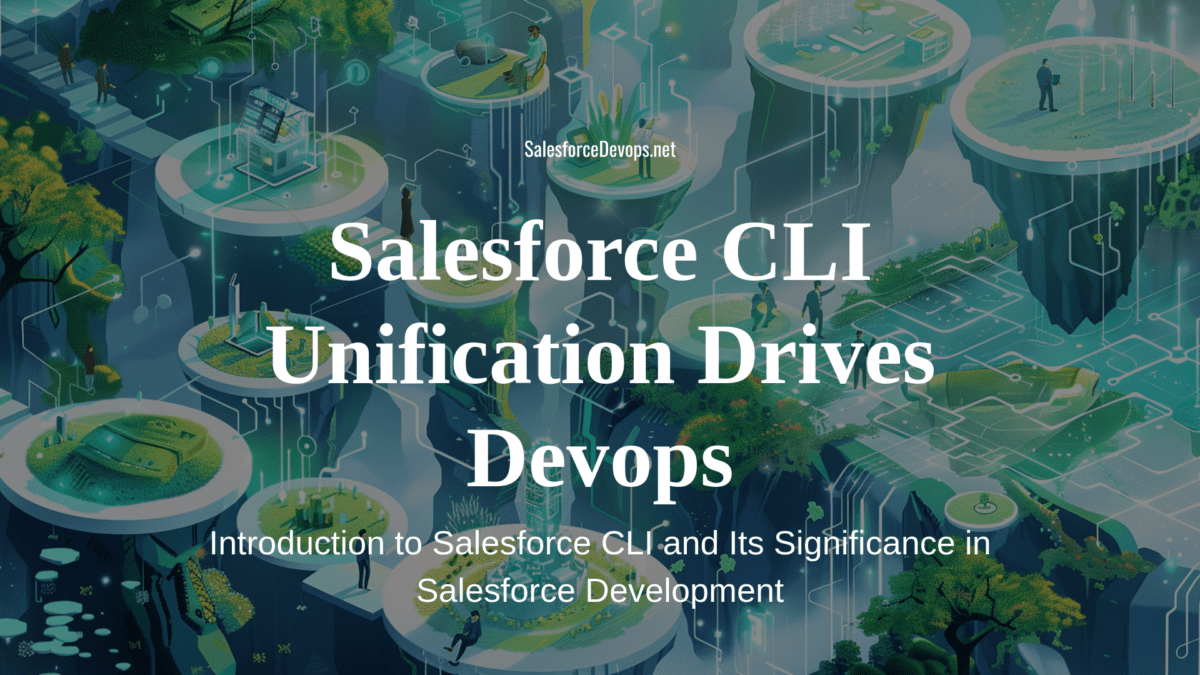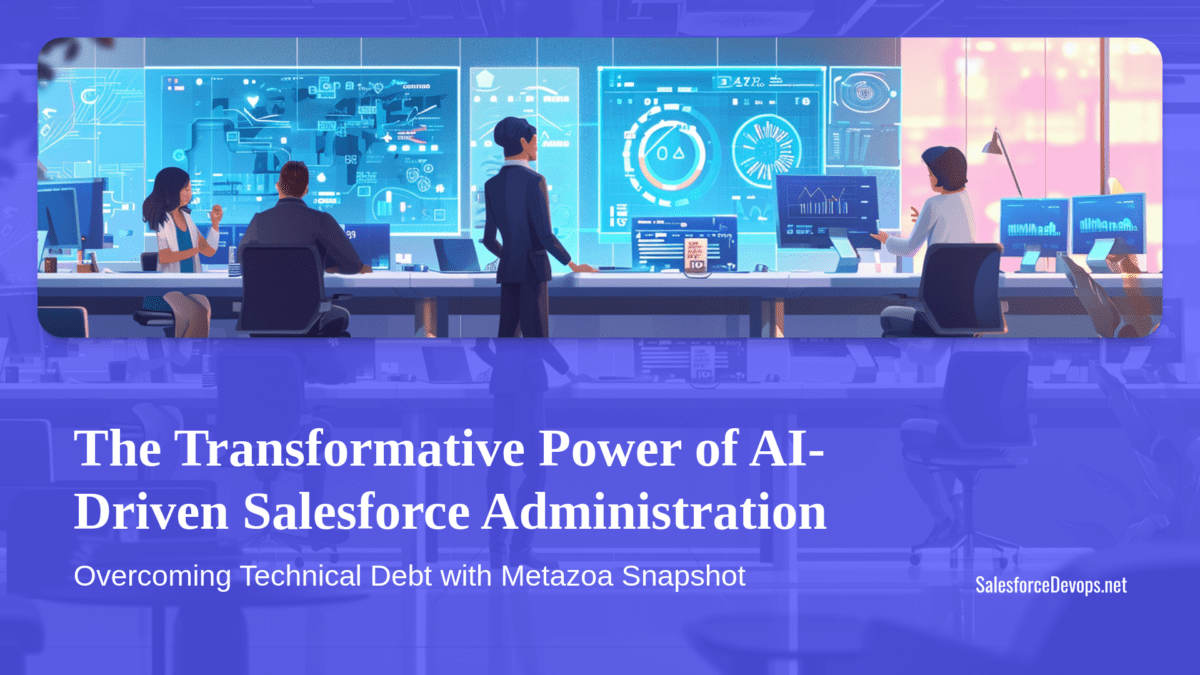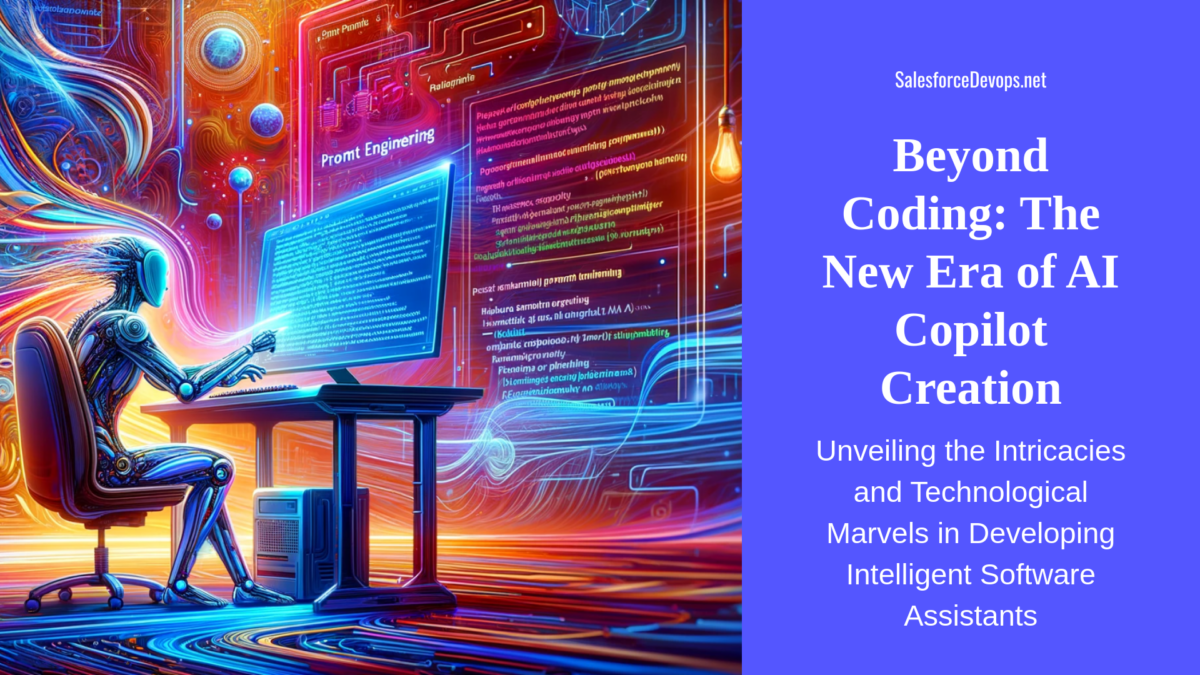Use the Salesforce Devops Segmentation Model for IT Success
I write about Salesforce devops because a hugely important information technology (IT) sector is tripping over itself. Like rearing an awkward teenage child, helping Salesforce devops to grow up is quite a challenge. To help usher this deserving field into adulthood, I analyzed the Salesforce devops industrial sector from the top down and drew a new segmentation model that categorizes, compares, and describes all the products and services that go into Salesforce devops program management. My goal is to create a model that gives solution architects and IT leaders a roadmap from which to implement a Salesforce devops program, as well as being a guide for Salesforce devops company founders, investors, and corporate M&A offices.
- What is Salesforce Devops?
- Salesforce Devops Industry Segmentation Model, Version 2
- Now, Go Sell!
- Vern's Salesforce Devops Posts
- About Vernon Keenan
What is Salesforce Devops?
On this website, the meaning of the term “Salesforce devops” does not follow an engineering rationale. For me, Salesforce devops means a program that manages the executives, stakeholders, employees, consultants, vendors, services, platforms, networks, endpoints, resources, and processes involved in achieving goals by changing a Salesforce org with clicks and code.
I am going with the simple word “devops,” and not with the capital D and O. I omit the intercapping of the word “devops” specifically to normalize the word. The IT industry needs to demystify our terminology and make devops better integrated into everyday business speech.
There is also no such thing as “DevOps Culture” on this website. Many enterprises see digital transformation efforts as do-or-die propositions. IT leaders cannot afford to wait for unmeasurable things like culture. Organizational change starts with management lessons learned from the great business writers of the 20th century. Look to Peter Drucker and Tom Peters for some wisdom, such as you can’t manage what you can’t measure. Devops observability tools are need to generate metrics, which allows managers to find and promote the successful teams.
I believe the simple word “devops” can represent how an app can produce organizational change based on an audience feedback loop. Devops allows IT leaders to present a large, previously unorganized part of their budget, as related to operational success.
I believe that if the IT industry makes devops to be synonymous with “accelerating change,” then devops becomes the agent of digital transformation.
Salesforce Devops Industry Segmentation Model, Version 2
The 7-layer OSI networking model inspired this model. Conceptually, the upper layers represent increased functionality, and the lower layers are foundational and operate with more granularity. Also, commands are processed by sending and receiving messages through an adjacent layer.

Here are the descriptions of the layers in the Salesforce devops industry segmentation model, starting with the bottom layer.
Repositories
This layer represents a Git-compatible server, which is an online storage service for source code repository management, user access, branch management, code security, and deployment artifact storage. Some Salesforce devops solutions implement code repositories on the Salesforce platform instead of a traditional Git server.
Release Management
This layer implements the workflow involved in managing new releases. Salesforce release management is considerably more complex than open-source release management, so it is a key feature requirement.
Developer Security, Platforms & Toolchains
Security concerns focus into this layer, which is where the developer “lives” executing the code/compile/test/repeat cycle. Toolchains and scripts play a critical role in the developer’s day-to-day workflow. Being the most complex, this layer now has its own layer diagram. Check the next section for a full description.
Orchestration
This is where the devops magic happens. It is like how the conductor of an orchestra commands the actions of their symphony. In this case, the musical instruments are the scripts and toolchains in the Developer Security, Platforms & Toolchains layer. Inbound messages to the orchestration layer trigger automated processes that create release artifacts, check & backup metadata, deploy release artifacts, and emit log files.
Observability
Observability includes runtime error monitoring, critical issue resolution, log file management, audience metrics, plus metrics on developer actions. Open source devops has a rich set of tools in this space, mainly centered around the Prometheus and Grafana projects, but Salesforce devops is sadly lacking in observability tools.
Devops Engineering & Services
This is the key knowledge and actor layer. In 2021, Salesforce technical architects with a devops specialty perform devops engineering roles. Organizations often employ consultants to build and assemble a new devops workflow. Consultants of various sizes play an important role in helping make the build-vs-buy decisions, and then to go on and implement a chosen devops solution. In the post-implementation phase of a devops project, organizations will ideally then take over operations.
Application Management Lifecycle
This layer manages app development projects. Managers of agile-based projects use tools like Jira and Confluence to share requirements, perform sprints, keep order and move projects forward. Many other project management methodologies are also in use by app teams. As the number and complexity of projects under management escalate, project management software must emit metrics which allows for corporate governance.
Value Stream Management
This layer consumes the metrics and management information emitted by the application management lifecycle layer. It uses this data to link app development metrics with the tangible value of each app. This gives the stakeholders and executives critical information used to make management decisions and to map app producers into groups.
Stakeholders & Executives
The top layer represents all the actors and stakeholders who formulate the goals of the organization, initiate app development projects, and use value stream management to inform executive decisions.
Salesforce Developer Security, Platforms & Toolchains Stack for Devops
The top layer of this sub-stack is the integrated developer environment (IDE). Developers use IDEs to write and manage code. Salesforce now recommends Microsoft Visual Studio Code (VS Code) as the IDE of choice in 2021.
In day-to-day operations, the developer uses the IDE to send messages down the stack. This invokes commands related to source code management functions, security, and deployment.

Here are the descriptions of the developer stack layers, starting from the bottom.
Platforms
This layer contains all the enterprise services to which the developer is writing code, including Salesforce, AWS, Azure, GCP, SendGrid, Zapier, Jitterbit, GitHub, plus hundreds more. A platform runs on the local developer workstation, remotely via the Internet, or on a secure enterprise resource.
Linux OS
The Linux operating system, with important add ons including NodeJS, NPM and Python is the heart of devops scripting. Devops constantly uses virtual Linux OS instances to perform orchestration functions. As organizations standardize on one type of Linux (RedHat or Debian/Ubuntu) for devops scripting they eliminate compatibility issues between the developer and deployment environments.
Platform Connectors
This layer contains all the application programming interface (APIs) needed to connect a Linux instance to all required platforms. In the case of SFDX, this is where the low-level interfaces to individual Salesforce APIs are installed.
Command Line Interfaces
CLIs are highly functional interfaces to the platform connectors and Linux OS.
Language Toolchains & Security
To automate these processes, developers create “toolchains,” or sets of scripts executed during different phases of the developer cycle. Toolchains perform orchestration functions when code is ready to be tested or moved into production. Developer toolchains must incorporate security utilities at this point in the stack.
Now, Go Sell!
I believe that expanding the impact of Salesforce devops will reduce the ever-increasing Salesforce application backlog. So I created the Salesforce devops industry segmentation model to guide IT leaders towards a better plan for success. I urge you to use the Salesforce devops industry segmentation model to help every marketer, salesperson, and SDR deliver more accurate information about their Salesforce devops products and services to IT leaders, so they can be better equipped for success. Now, take this new tool and go out and sell!
Vern’s Salesforce Devops Posts
- Salesforce SDLC Nomenclature: Adopting the Ways of The Devops 👈 Version 1 of the model
- Salesforce Devops in Early 2021
- The Ways of the Salesforce Devops: Build or Buy?
- SFDX-CLI Paves The Way for Open-Source Salesforce Devops
About Vernon Keenan

Vernon Keenan (LinkedIn) works as a senior information technology industry consultant based in Oakland, California.
He earned his B.Sc. in Biomedical Engineering at Northwestern University where he programmed a PDP-8 with punched paper tape.
In his 34-year-long career he has been a teacher, SPSS programmer, database administrator, clinical researcher, technology journalist, product marketing manager, market researcher, management consultant, and industry analyst. Most recently he is a telecom operator, cloud architect, Go devops engineer and Salesforce Developer/Architect.
For inquiries about Salesforce strategy briefings or solution architect work please contact Vern directly at +1-510-679-1900 or [email protected].
